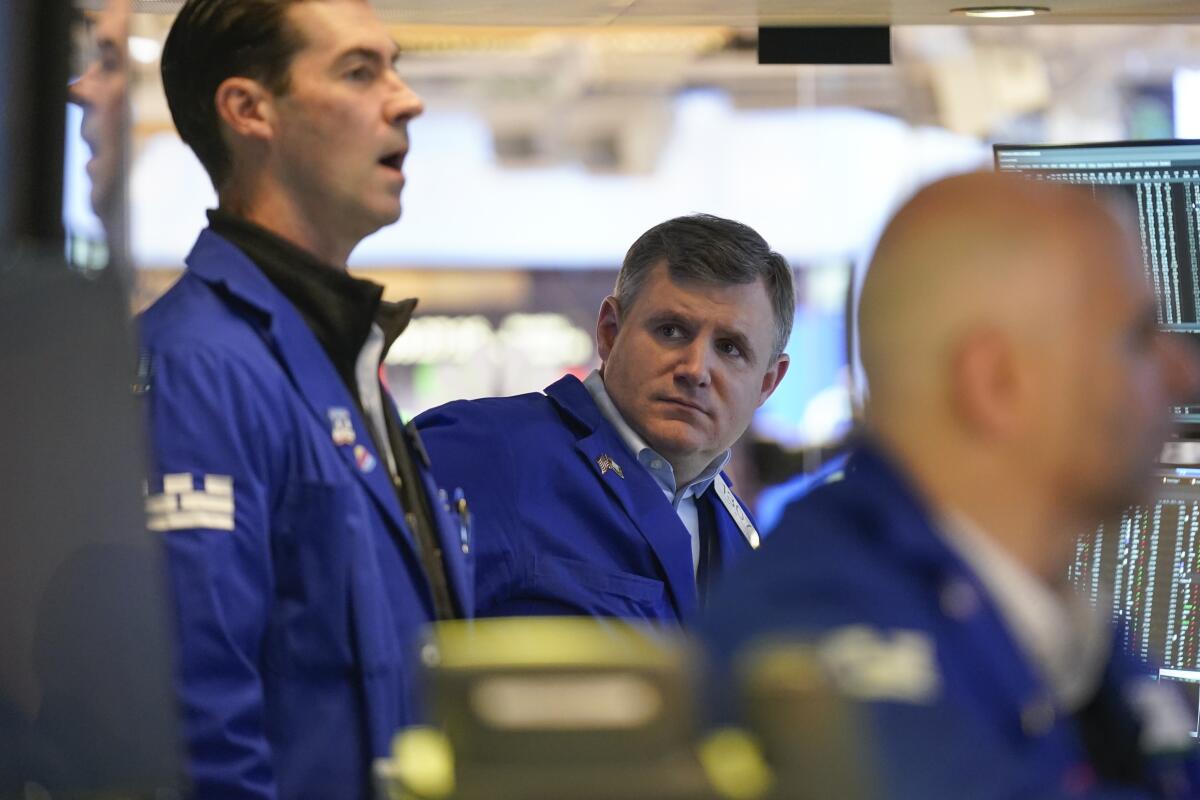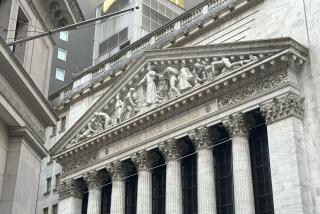Wall Street ends an uneven day as investors await more clues from the Fed

Wall Street capped an unsteady day of trading with an uneven finish for the major stock indexes Tuesday as gains by energy companies were offset by losses in technology and other sectors.
The Standard & Poor’s 500 slipped 0.2%, its third straight drop. The tech-heavy Nasdaq composite fell 0.6%, while the Dow Jones industrial average ended just barely in the black and small-company stocks rose.
The mixed finish came as investors watched developments in China and looked ahead to a speech Wednesday by Federal Reserve Chair Jerome H. Powell for clues as to what the central bank will do next in its fight to cool stubbornly hot inflation.
Wall Street is especially eager to hear what Powell has to say after remarks on Monday by two Federal Reserve bank presidents helped spur a broad sell-off for stocks.
“This is a market that’s waiting for more information, particularly from Powell,” said Quincy Krosby, chief equity strategist for LPL Financial.
The S&P 500 slipped 6.31 points to 3,957.63. The Nasdaq dropped 65.72 points to 10,983.78. The Dow, which had been down as much as 187 points, gained 3.07 points to close at 33,852.53.
The Russell 2000 index of small-company stocks rose 5.59 points, or 0.3%, to 1,836.55.
Technology stocks were the biggest drag on the broader market. Apple fell 2.1%. Financial and industrial stocks were among the gainers. American Express added 2% and United Parcel Service rose 2.8%. Energy stocks rose as U.S. crude oil prices climbed 1.2%. Hess rose 1.8%.
Railroad operators rose amid hopes that a rail strike can be averted as Congress prepares to take up legislation this week to impose a deal that some unions agreed to in September. Union Pacific rose 2% and CSX gained 1.8%.
Bond yields gained ground. The yield on the 10-year Treasury, which influences mortgage rates, rose to 3.73% from 3.68% late Monday.
Markets in Europe were mixed, and markets in Asia rose broadly.
Hong Kong’s benchmark index jumped 5.2% as protests in China seemingly calmed down amid a heightened police presence in major cities.
China’s “zero-COVID” policy includes strict lockdown procedures that have crimped the nation’s economy and threaten global supply chains. That has added to broader concerns globally about stubbornly hot inflation and the potential for recessions to hit economies worldwide.
Wall Street’s big focus remains the Federal Reserve’s fight against the hottest inflation in decades. The central bank has been aggressively raising interest rates to make borrowing more difficult and tame high prices. The Fed’s benchmark rate currently stands at 3.75% to 4%, up from close to zero in March.
Investors have been hoping that the Fed could ease up on its rate increases and are closely watching the latest data on inflation, consumer spending and the employment market. They’ll be looking for any signs of a shift in policy when Powell speaks at the Brookings Institution about the outlook for the U.S. economy and the labor market on Wednesday.
The Conference Board reported Tuesday that consumer confidence fell slightly in November from October, but remains relatively strong. Consumer spending has been a solid area of the economy, along with employment.
The U.S. government will be releasing several reports about the labor market this week. A report about job openings and labor turnover for October will be released Wednesday, followed by a weekly unemployment claims report Thursday. The closely watched monthly report on the job market will be released Friday.
More to Read
Inside the business of entertainment
The Wide Shot brings you news, analysis and insights on everything from streaming wars to production — and what it all means for the future.
You may occasionally receive promotional content from the Los Angeles Times.










